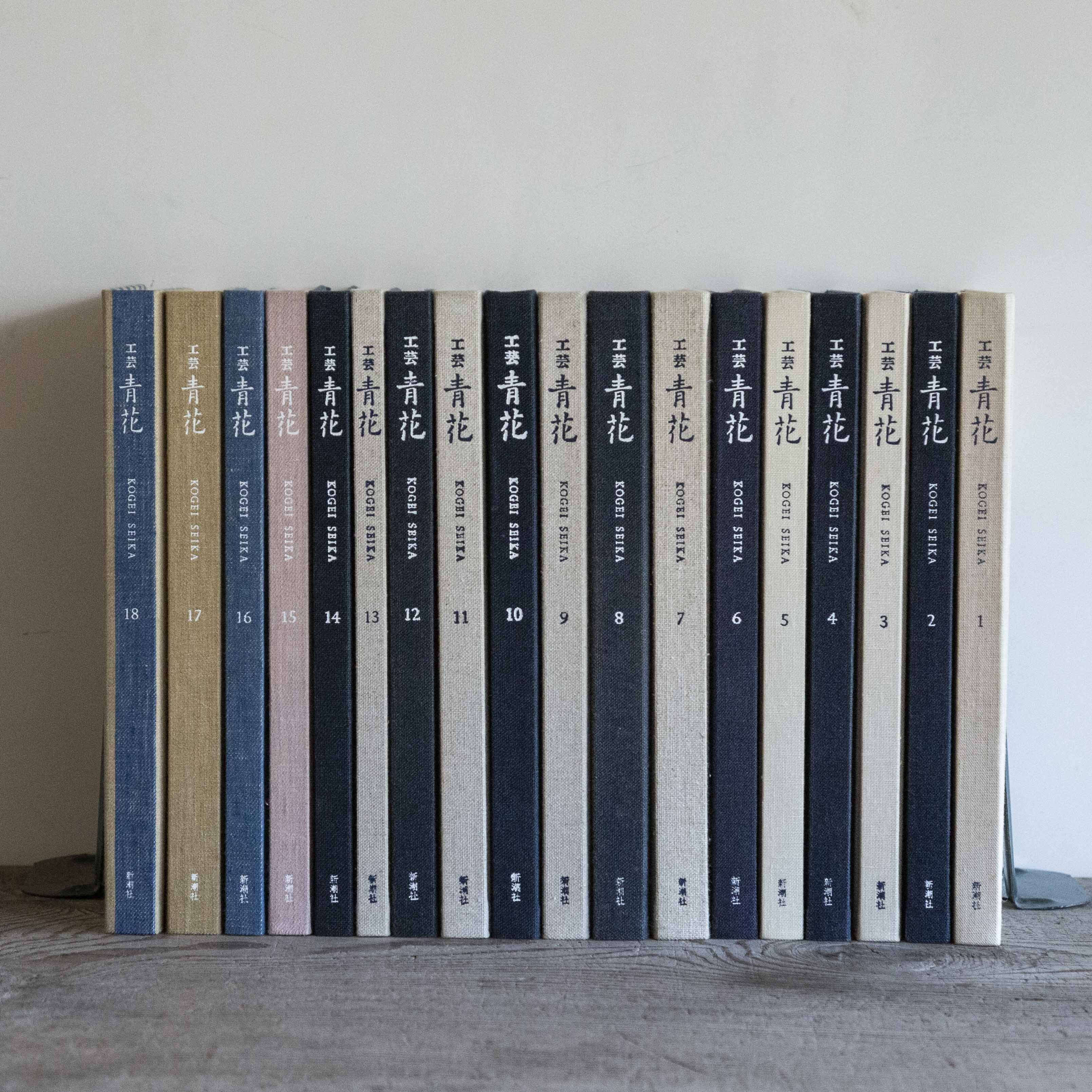
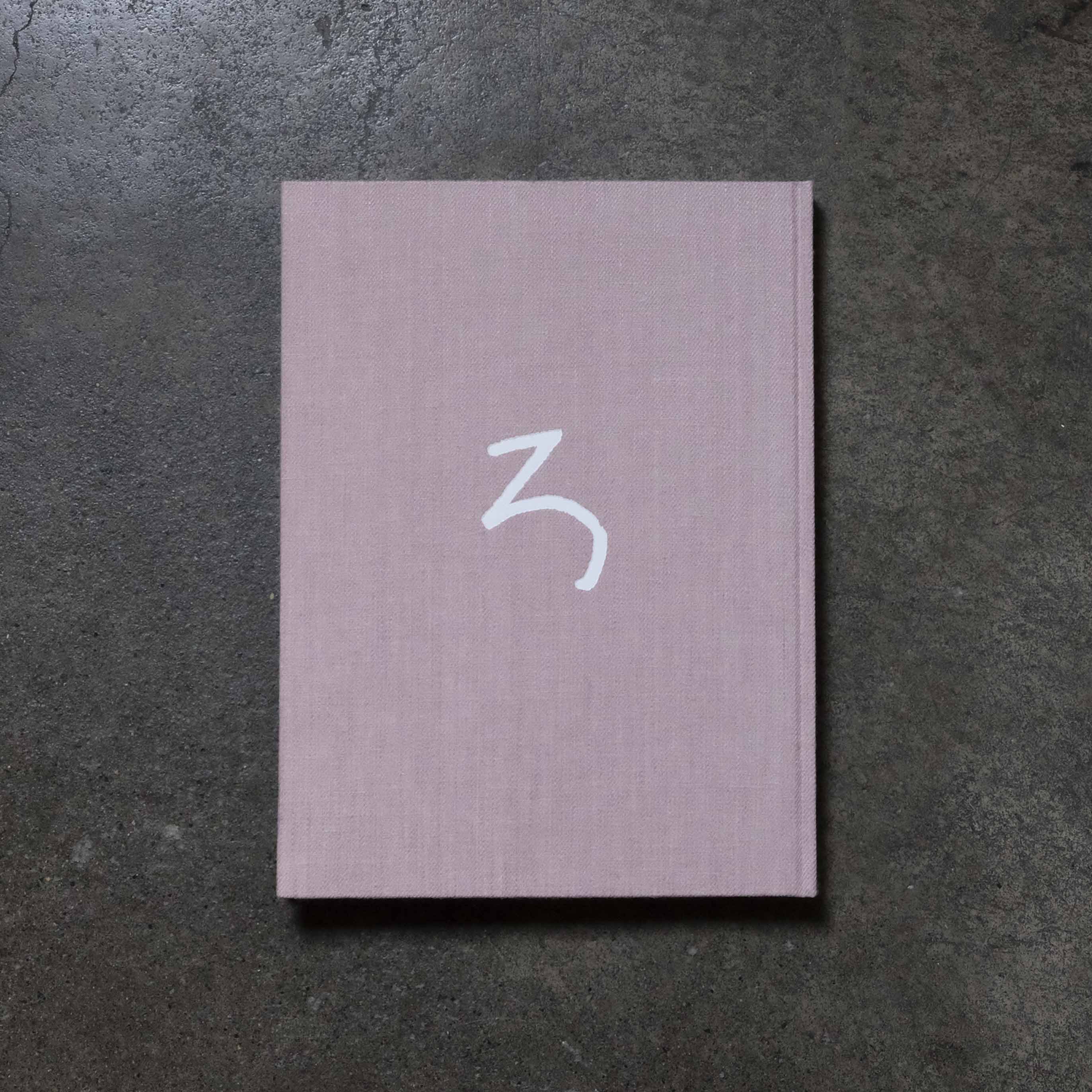
『工芸青花』15号
■2020年11月15日刊
■A4判|麻布張り上製本|見返し和紙(楮紙)
■カラー160頁|望月通陽の型染絵を貼付したページあり
■限定1000部|10,000円+税
■御購入はこちらから
https://shop.kogei-seika.jp/products/detail.php?product_id=499
Kogei Seika vol.15
■Published in 2020 by Shinchosha, Tokyo
■A4 in size, linen cloth coverd book with endpaper made of Japanese paper (kozo)
■160 Colour Plates, Frontispiece with a stencil dyed art work by Michiaki Mochizuki
■Each chapter is accompanied by an English summary and all photographs are with captions in English
■Limited edition of 1000
■10,000 yen (excluding tax)
■To purchase please click
https://shop.kogei-seika.jp/products/detail.php?product_id=499
目次 Contents
1 書と古道具 坂田和實と日置路花
Calligraphy and Antique : Kazumi Sakata and Roka Hioki
・路花さんの書 坂田和實
・拙をめぐって 菅野康晴
2 鹿と彫刻 橋本雅也
Stags and Sculpture : Masaya Hashimoto
・鹿曼荼羅とはなにか 前橋重二
・動物と植物のあいだ 門田さくら
3 ロシアのロマネスク ノヴゴロドの聖ソフィア大聖堂
Romanesque Art in Russia, St. Sophia’s Cathedral in Novgorod
・ヴァイキングゆかりの商都 小澤実
・ロシアイコンとロマネスクの扉 金沢百枝
連載 Series
・ロベール・クートラスをめぐる断章群9 堀江敏幸
扉の絵
精華抄
扉の絵 5
The Frontispiece 5
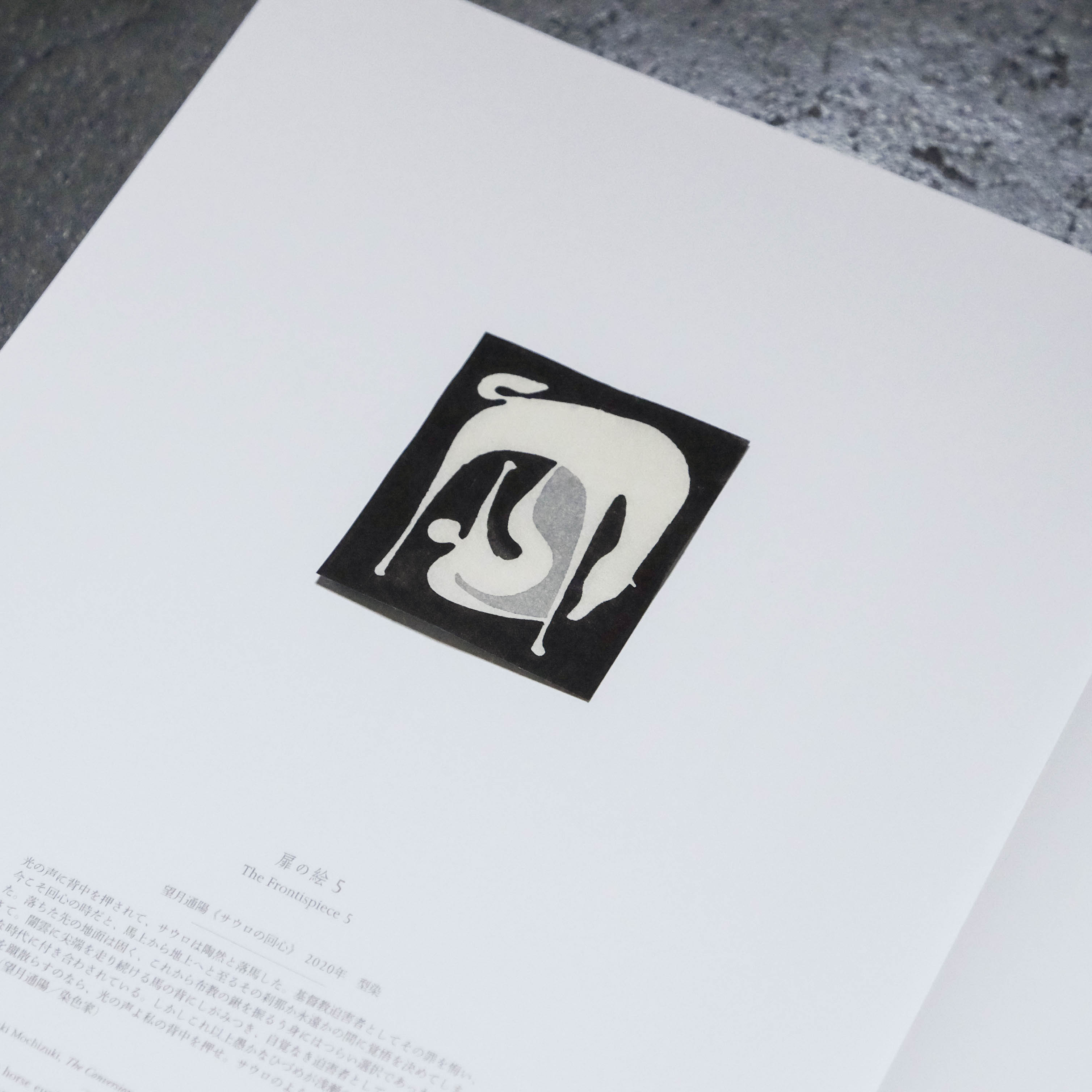
望月通陽《サウロの回心》 2020年 型染
光の声に背中を押されて、サウロは陶然と落馬した。基督教迫害者としてその罪を悔い、今こそ回心の時だと、馬上から地上へと至るその刹那か永遠かの間に覚悟を決めてしまった。落ちた先の地面は固く、これから布教の鍬を振るう身にはつらい選択であったが。
さて。闇雲に尖端を走り続ける馬の背にしがみつき、自覚なき迫害者として、私はこの傲慢な時代に付き合わされている。しかしこれ以上愚かなひづめが浅瀬の小魚やねぐらの鳥たちを蹴散らすのなら、光の声よ私の背中を押せ。サウロのようにめでたく落馬をしてのける。(望月通陽/染色家)
Michiaki Mochizuki, The Conversion of Saul, 2020, Katazome (Japanese stencil print)
Saul fell off his horse euphorically as the voice of light pushed him from the back. As a persecutor of Christians, he repented his sin and decided to convert at that moment, eternity, from horseback to earth. Now was the time, and Saul was ready for it. Though the ground where he fell was hard, and it was a tough choice for the missionary hoe to wield.
Well. Clinging to the back of the horse that keeps running haphazardly on the cusp, as an unconscious persecutor, I have to put up with this arrogant age. But if the silly hooves keep kicking away the small fish in the shallows and roosting birds, oh, the voice of light, push me on the back so that I can fall off the horse auspiciously like Saul. (Michiaki Mochizuki / Artist)
1|書と古道具 坂田和實と日置路花
Calligraphy and Antique : Kazumi Sakata and Roka Hioki

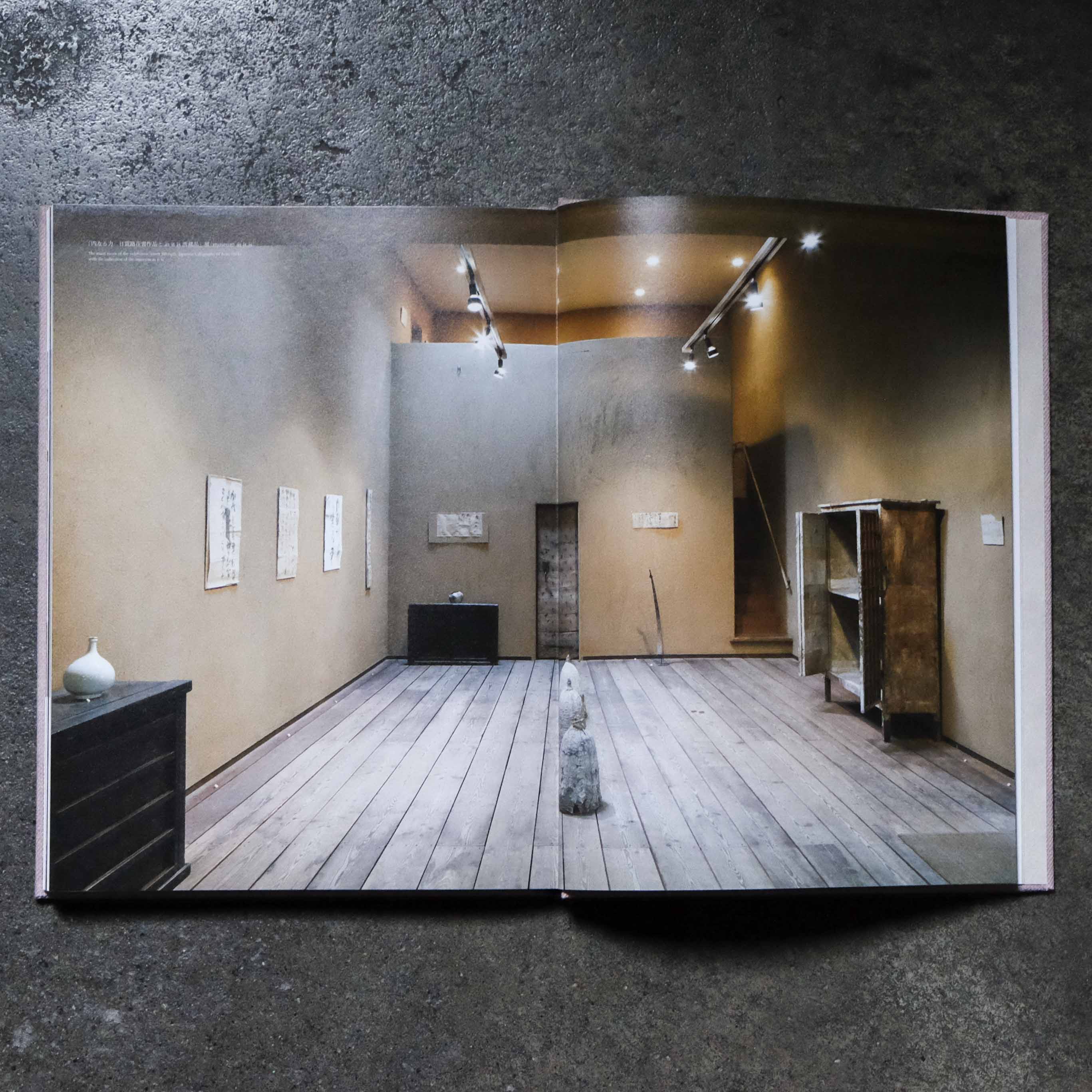
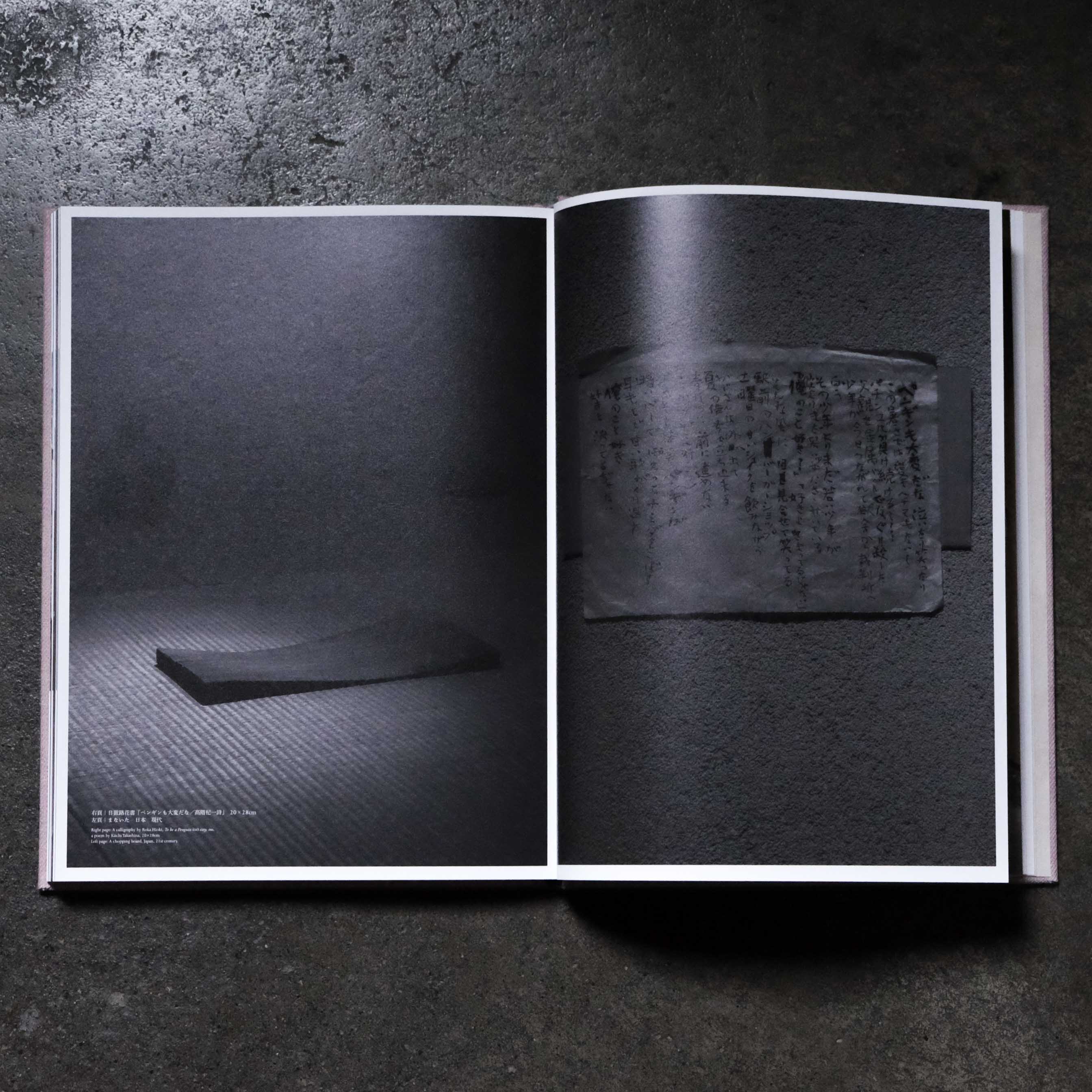
二〇一九年一〇月から今年の九月まで、千葉の museum as it is では「内なる力 日置路花書作品と as it is 所蔵品」展がひらかれていました。as it is は、目白の古道具坂田の坂田和實さんの個人美術館で、一九九四年に開館しました(設計は中村好文さん)。展示替はだいたい半年に一度で、十数年まえからは、半年が常設展(通常展示)、のこり半年は陶芸家や建築家やデザイナーのコレクション展がおこなわれてきました。今回は前者、この記事は同展を取材したものです。路花さんの書作品も坂田さんのコレクションなのですが、それがいつごろ書かれたものなのか、路花さん自身もよくおぼえていないそうです。おそらく三〇年くらいまえ、とのこと。
日置路花さんは一九三六年東京生れ、少女時代から病弱で、書を教えて生きてゆこうと筆をもちました。岡部蒼風(一九一〇—二〇〇一)に師事、のちに新井狼子(一九二〇—二〇〇五)らと無限会をはじめます(一九八〇年)。ともに、そして路花さんも、各種団体展のような既成の書壇とはかかわらない書家です。二〇一八年に青花の会で日置路花展をおこなったとき、路花さんは「やまほど書かないと、きれいなまま終ってしまう。家庭料理のように、あたりまえのものにならないと」といっていました。S
From October 2019 to September 2020, the museum as it is in Chiba, Japan, held an exhibition entitled ‘Inner Strength: Japanese Calligraphy of Roka Hioki with the collection of the museum as it is’. The museum as it is a private museum of Kazumi Sakata, opened in 1994, designed by the architect Yoshifumi Nakamura. The display changes twice a year. For the past ten years, half of the year was for the permanent collection and the other half for the collection of potters, architects, and designers. The exhibition of Roka is the former. Roka’s calligraphic works are from Sakata’s collection, but Roka herself does not remember precisely when she wrote them. Probably thirty years ago.
Roka Hioki was born in Tokyo in 1936 and has been feeble since she was a girl, so she decided to teach calligraphy to make a living. She studied under Sofu Okabe (1910-2001) and later started a group Mugenkai with Roshi Arai (1920-2005) and others (1980). Sofu, Roshi, and Roka did not belong to the established calligraphic circles of various group exhibitions. While her exhibition at Seika Gallery in 2018, Roka said, ‘If you do not write tons, the work will end up being just ‘beautiful’. I want my calligraphy to be like home cooking so that it will become ‘ordinary’. (s)
2|鹿と彫刻 橋本雅也
Stags and Sculpture : Masaya Hashimoto
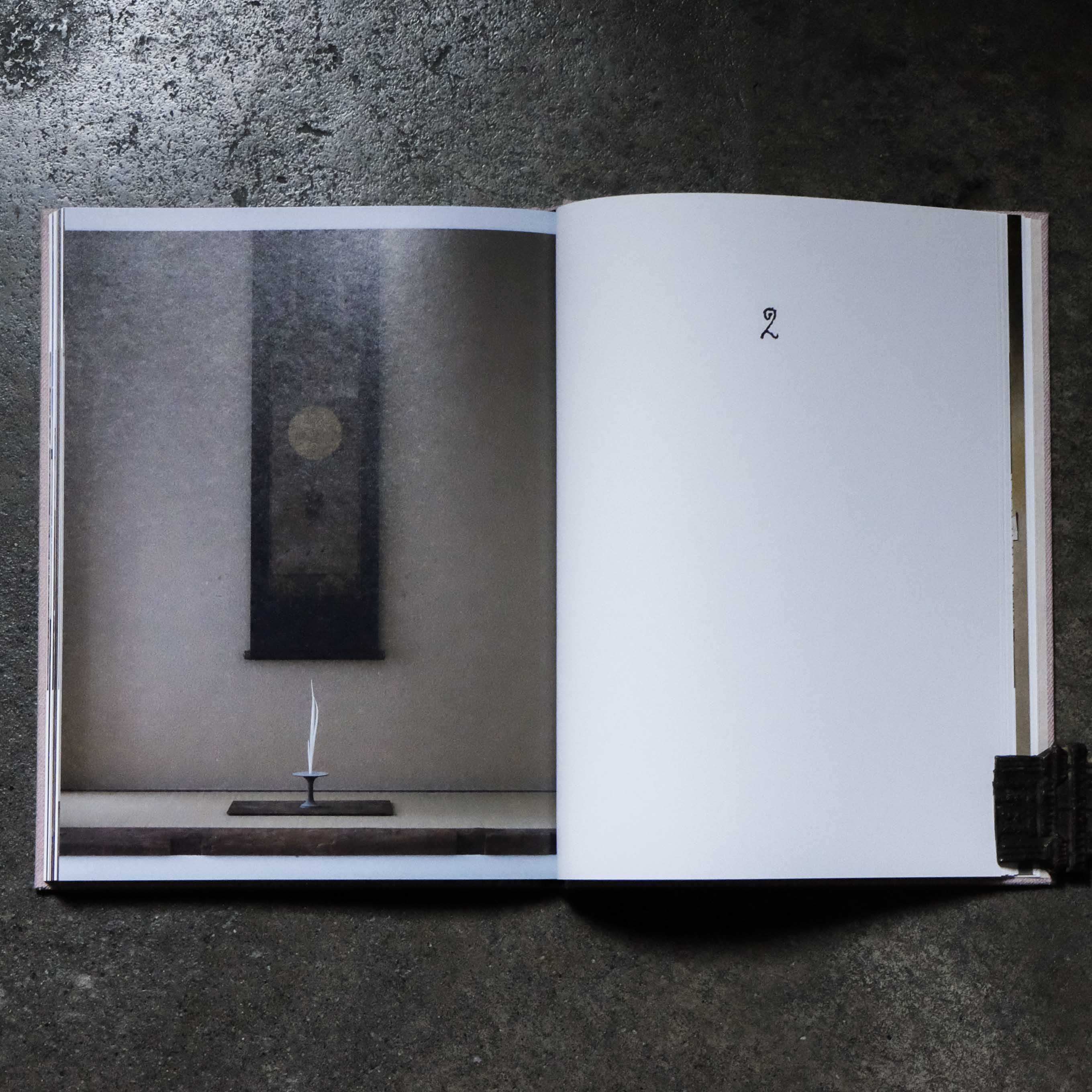
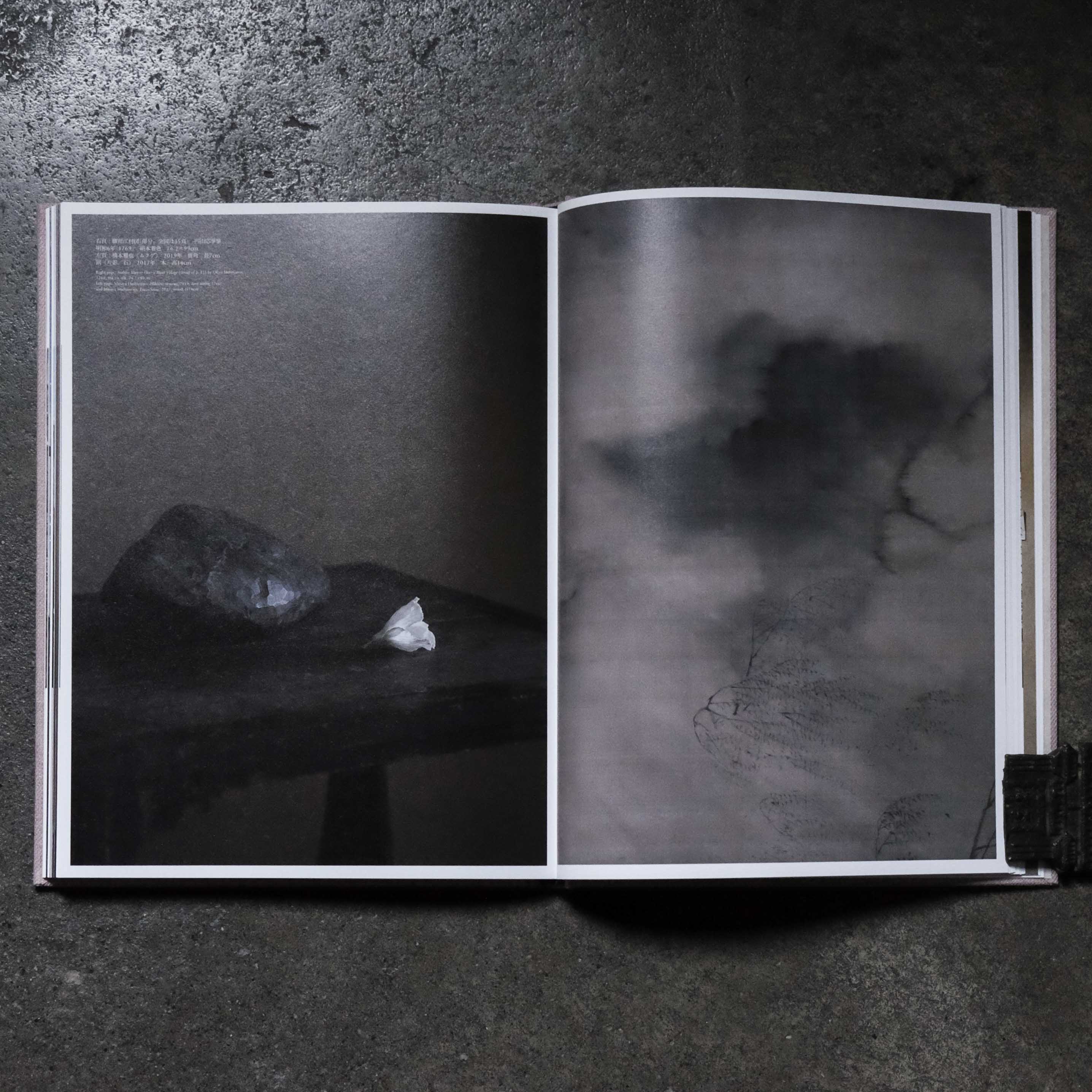
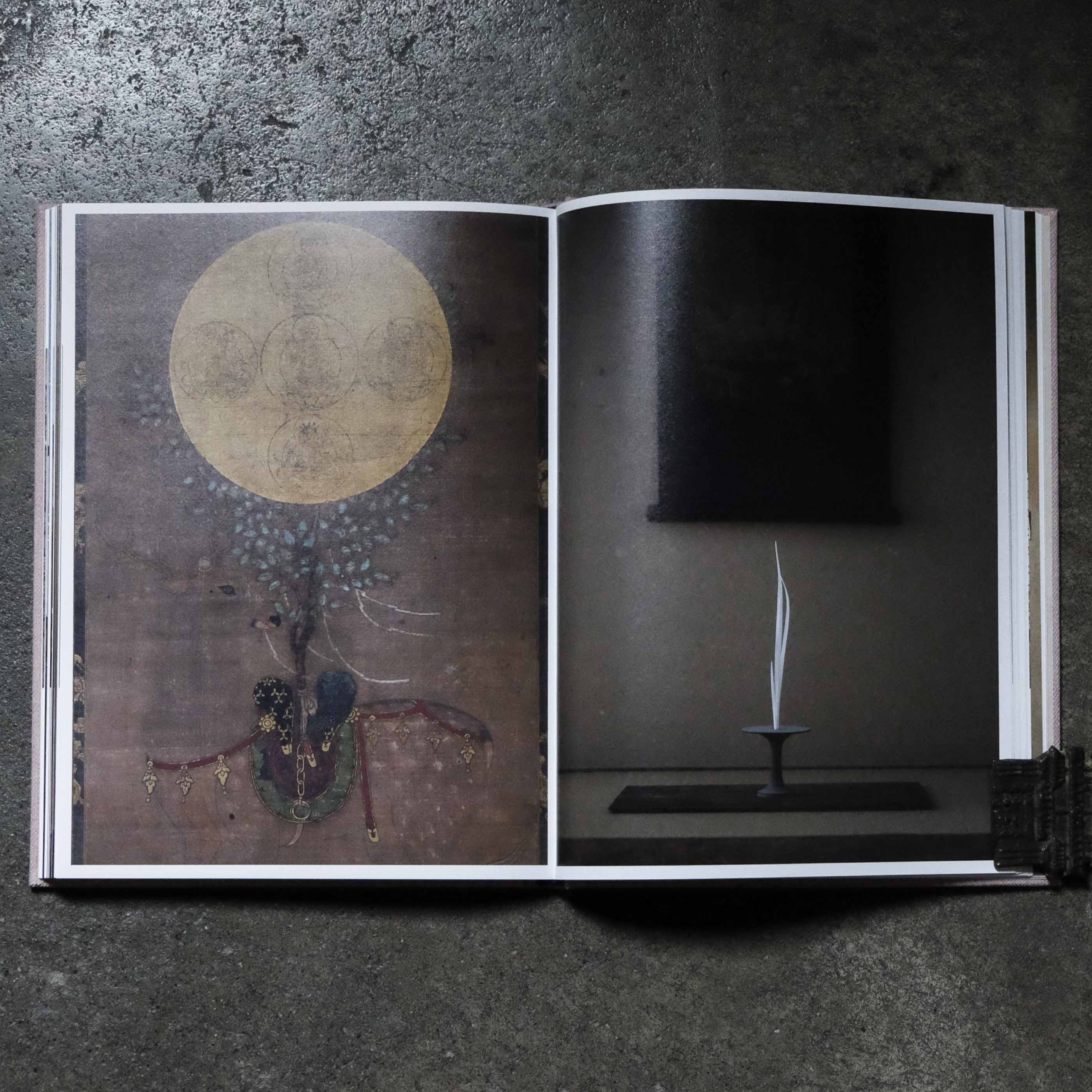
彫刻家・橋本雅也さん(一九七八年生れ)の個展「間(あわい)なるもの─霧のあと」(二〇一九年一一月一六日—一二月一四日)に取材した記事です。会場はロンドンギャラリー白金。古美術店で、現代の作品がならぶことはほぼないのですが、主人の田島整さんは橋本さんをたかく評価しています(ロンドンギャラリーでの個展は二〇一二年、一四年についで三度目)。自分がえらぶ古いものと、橋本作品のもつ気配に近さを感じるそうです。今展でも、鹿曼荼羅図、円山応挙画、根来折敷や前机といった古美術品ととりあわせています。
橋本さんの仕事では鹿の角や骨を素材にした写実的な草木花、がよく知られています。それらは超絶技巧的であり、鹿狩りに同行して素材を得た逸話などから、生死、祈り、といった言葉で語られることも多いのですが(いずれも妥当だと思います)、今回は、すこしべつのことを考えようと思いました。主客の反転、合一、無化などです。S
This article reports on the solo exhibition of the sculptor Masaya Hashimoto (born in 1978) titled ‘Things in Between: After the Mist’ (November 16 - December 14, 2019). The venue is London Gallery Shirokane. In an antique shop, contemporary works are rarely on display. Still, the owner, Hitoshi Tajima, appreciates Hashimoto’s work very much (it was his third solo exhibition at London Gallery, after those in 2012 and 2014) and he feels the closeness between the old things he cherishes and the atmosphere of Hashimoto’s works. In this exhibition as well, he combines Hashimoto’s work with antique art such as the Deer Mandala from Kasuga Shrine, a painting by Okyo Maruyama, the Negoro Oshiki (Japanese lacquered tray), and the Maezukue (a table to put the offering for Buddha).
Hashimoto is well known for realistic sculptures of plant, tree, and flowers made from deer antlers and bones. He carves them with transcendent technique and, based on anecdotes of accompanying a deer hunter to obtain the materials, are sometimes described in terms of life and death or prayer (both of which I think are appropriate). However, in this article, I wanted to see his work from another angle: the reversal of subject and object, union, and nullification. (S)
3|ロシアのロマネスク ノヴゴロドの聖ソフィア大聖堂
Romanesque Art in Russia, St. Sophia’s Cathedral in Novgorod
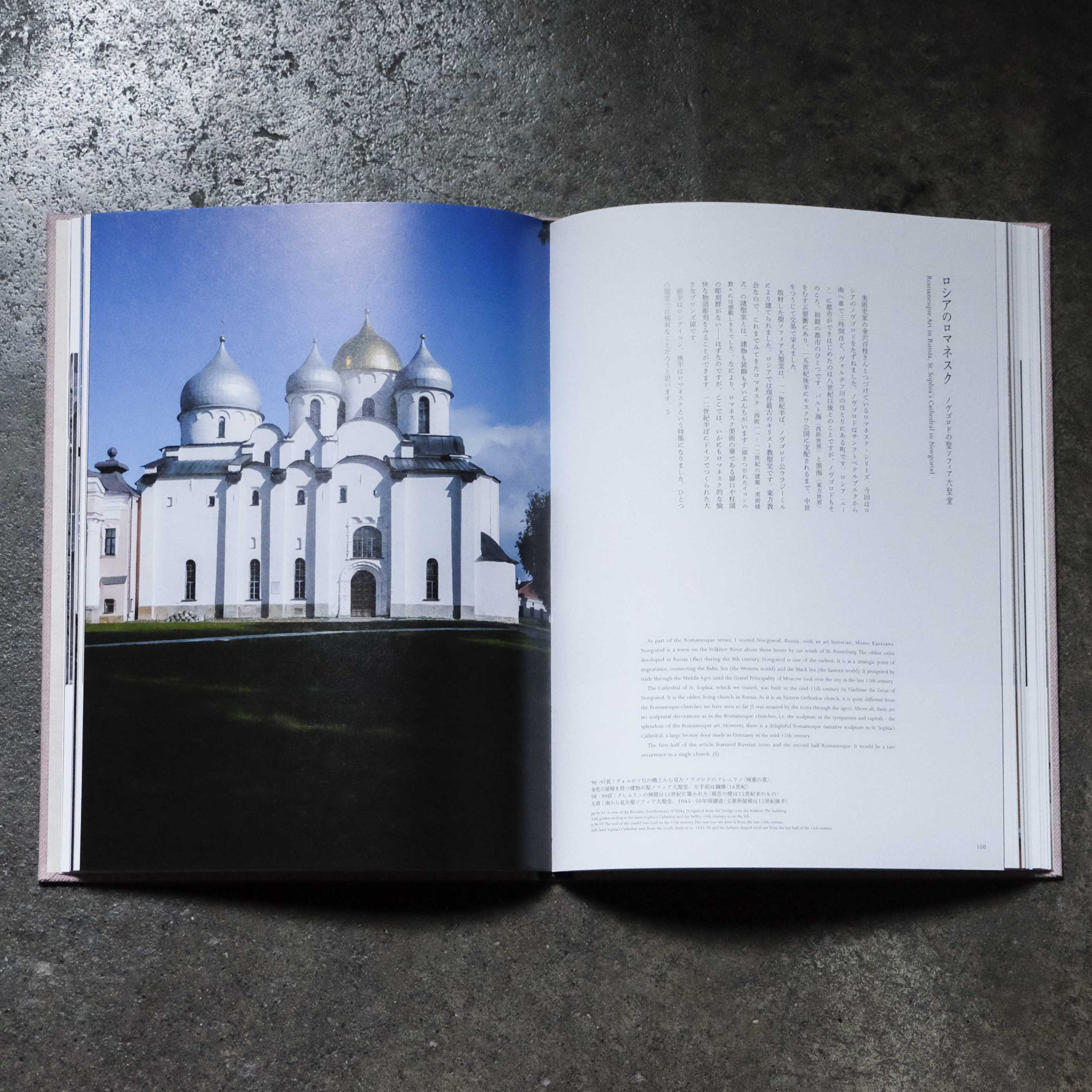
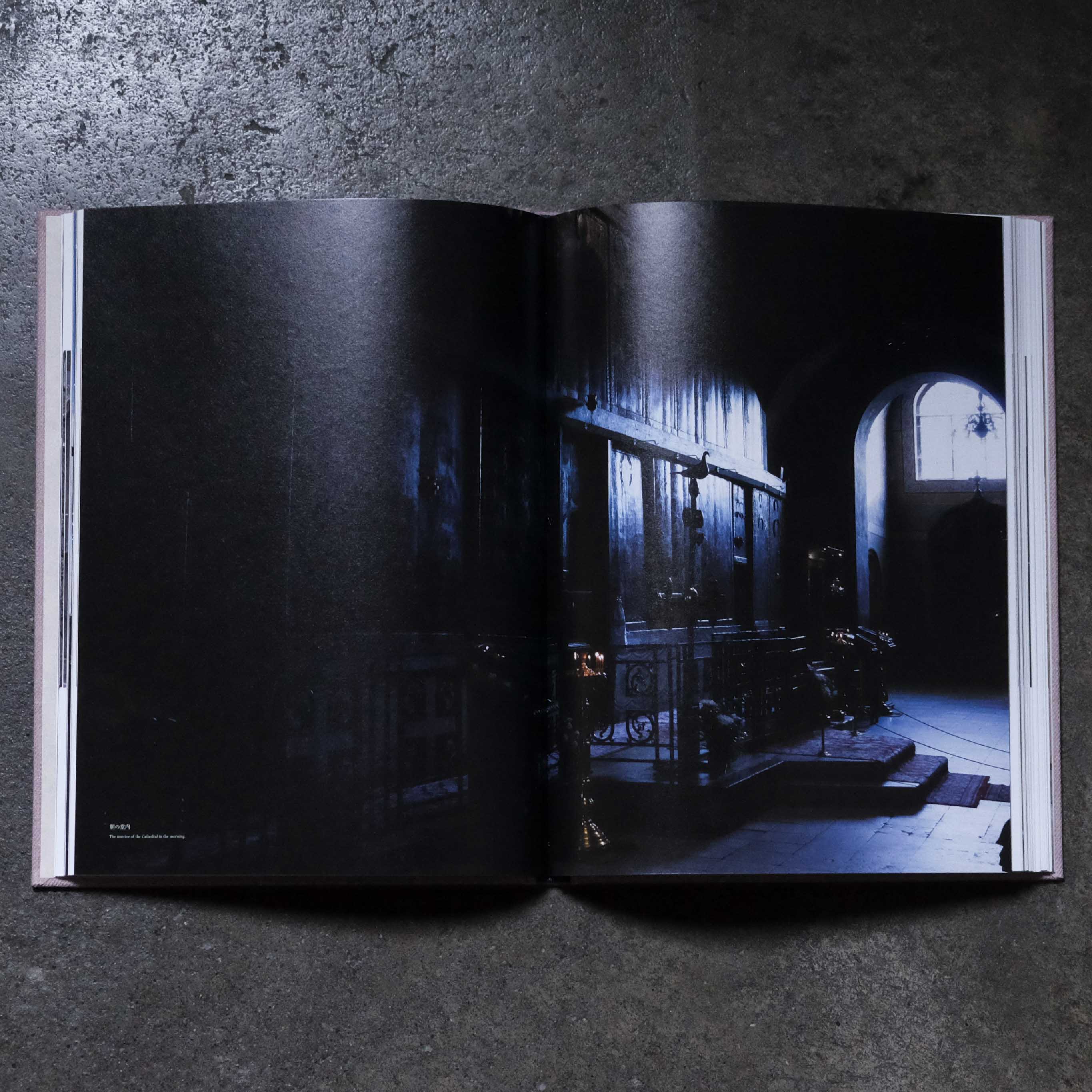
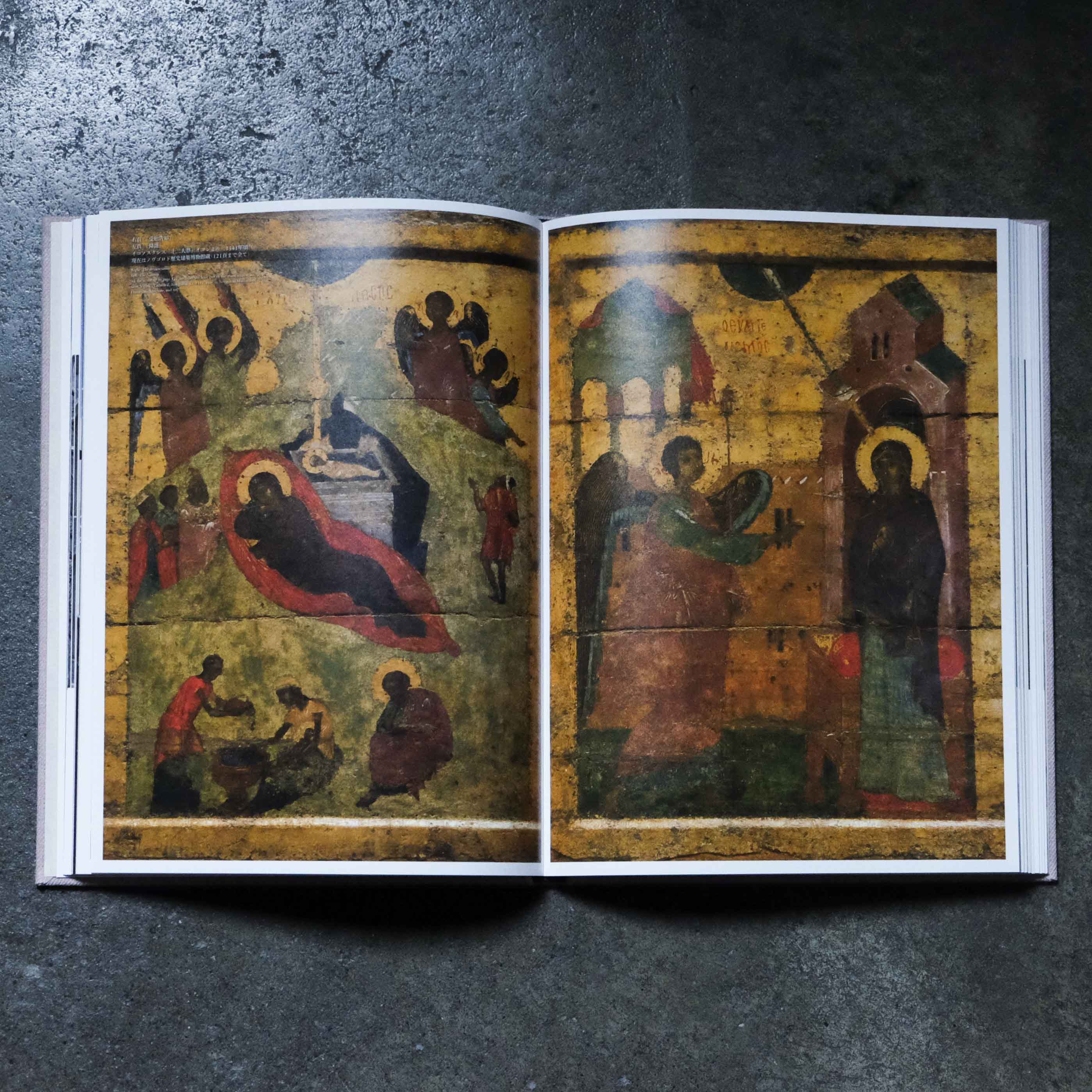

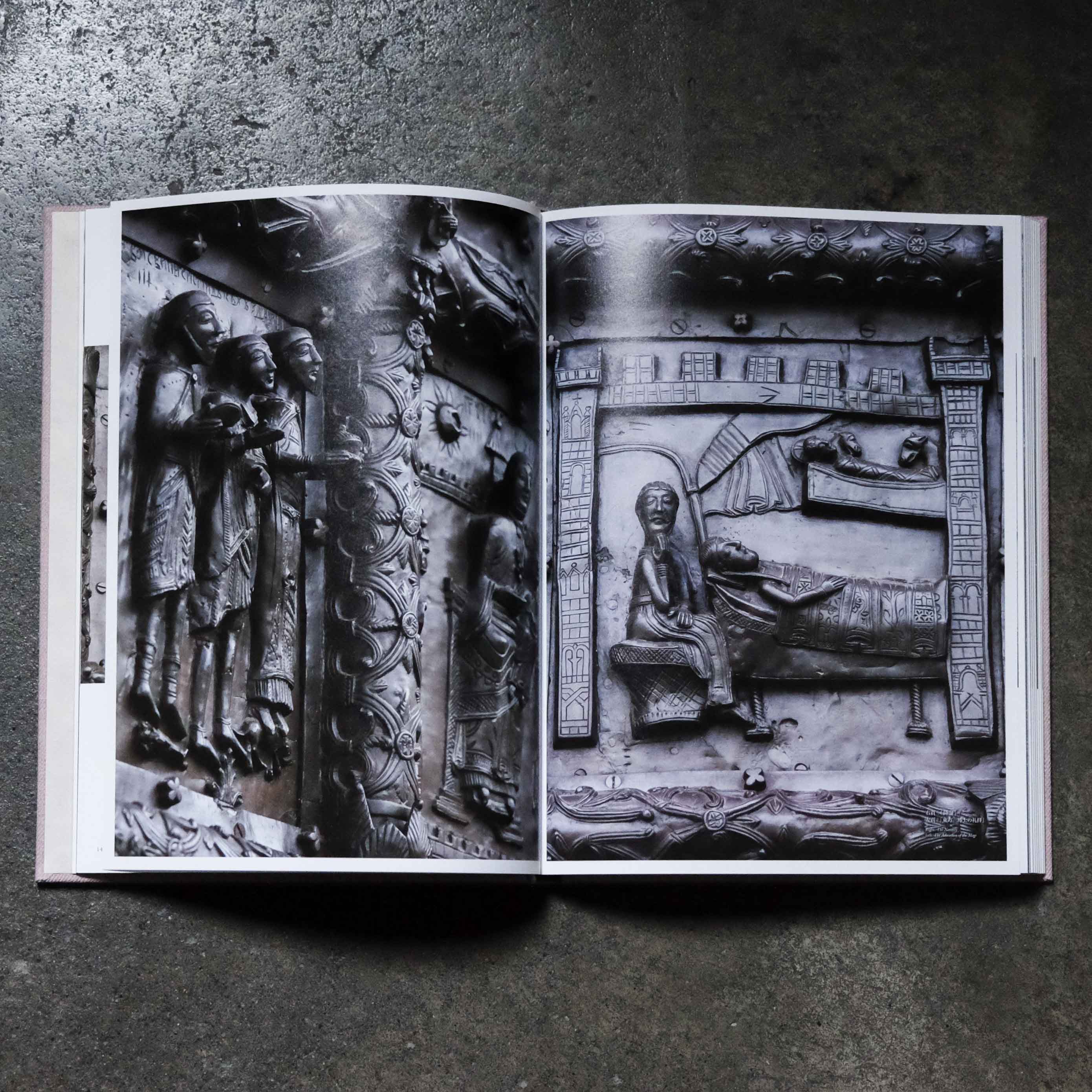
美術史家の金沢百枝さんとつづけているロマネスク・シリーズ、今回はロシアのノヴゴロドをたずねました。ノヴゴロドはサンクトペテルブルクから南へ車で三時間ほど、ヴォルホフ川のほとりにある町です。ロシア(ルーシ)に都市ができはじめたのは八世紀以後とのことですが、ノヴゴロドもそのころ、初期の都市のひとつです。バルト海(西欧世界)と黒海(東方世界)をむすぶ要衝にあり、一五世紀後半にモスクワ公国に支配されるまで、中世をつうじて交易で栄えました。
取材した聖ソフィア大聖堂は、一一世紀半ば、ノヴゴロド公ウラジーミルにより建てられました。ロシアでは現存最古のキリスト教聖堂です。東方教会なので、これまでみてきたロマネスク(西欧一一—一二世紀の建築・美術様式)の諸聖堂とは、建物も装飾もずいぶんちがいます(描きつがれたイコンの数々には感歎しきりでした)。なにより、ロマネスク美術の華である扉口や柱頭の彫刻群がない──はずなのですが、ここでは、いかにもロマネスク的な愉快な物語彫刻をみることができます。一二世紀半ばにドイツでつくられた大きなブロンズ扉です。
前半はロシアイコン、後半はロマネスクという特集になりました。ひとつの聖堂では稀有なことだろうと思います。S
As part of the Romanesque series, I visited Novgorod, Russia, with an art historian, Momo Kanazawa. Novgorod is a town on the Volkhov River about three hours by car south of St. Petersburg. The oldest cities developed in Russia (Rus) during the 8th century. Novgorod is one of the earliest. It is at a strategic point of importance, connecting the Baltic Sea (the Western world) and the Black Sea (the Eastern world). It prospered by trade through the Middle Ages until the Grand Principality of Moscow took over the city in the late 15th century.
The Cathedral of St. Sophia, which we visited, was built in the mid-11th century by Vladimir the Great of Novgorod. It is the oldest living church in Russia. As it is an Eastern Orthodox church, it is quite different from the Romanesque churches we have seen so far (I was amazed by the icons through the ages). Above all, there are no sculptural decorations as in the Romanesque churches, i.e. the sculpture in the tympanum and capitals - the splendour of the Romanesque art. However, there is a delightful Romanesque narrative sculpture in St. Sophia’s Cathedral, a large bronze door made in Germany in the mid-12th century.
The first half of the article featured Russian icons and the second half Romanesque. It would be a rare occurrence in a single church. (S)

